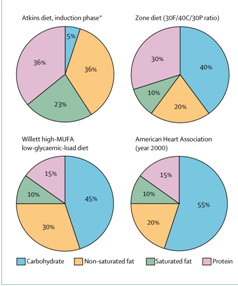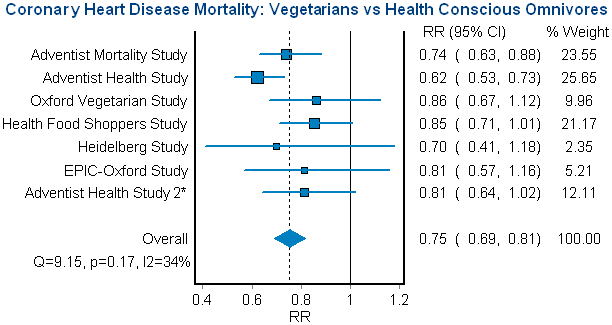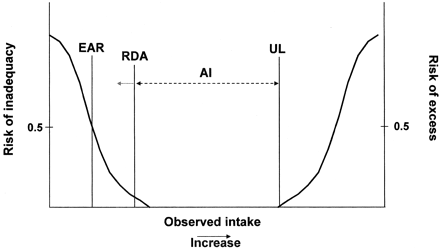Biological Macromolecules and Their Implications in Human Health, Research Paper Example
Background: Are you eating a healthy diet? In the developing world, obesity is on the rise, there is a constant concern of food allergies, and people are constantly arguing the validity of specific diets. It would be beneficial for many Americans to alter their diets completed.
Statement of the Objective: The purpose of this research is to determine what nutrition is needed to maintain a healthy diet and assess whether average Americans tend to follow these nutritional requirements. Based on the chemical nature of food, recommendations will be provided to help individuals that are not meeting health requirements to gain a greater understanding of the diets that they would benefit by following.
Results: It was found that sedentary lifestyles and an increased consumption in processed foods in addition to an improper balance of nutrition consumption contributes to obesity in the United States.
Conclusion: It is valuable to emphasize the importance of portions and the use of the food pyramid to help Americans take in only the nutrition that their body needs, thereby preventing against adverse health effects.
Introduction
The human body requires the use of several biological macromolecules in order to maintain bodily components. Food contains a majority of these macromolecules, although bodily process can allow for their synthesis. The biological macromolecules necessary for life include proteins, carbohydrates, lipids, and nucleic acids. Proteins are made from 20 different amino acid building blocks, 11 of which are considered non-essential amino acids because our bodies can manufacture them. However, 9 of these amino acids must be consumed through food to ensure that our body has enough amino acid components to construct the proteins that are necessary for conducting our daily biological activities. Proteins allow for a variety of activities to be conducted in the human body, including helping chemical reactions be carried out by acting as enzymes, packaging DNA, and helping hormones and signaling molecules to travel within the cell or from one cell to another.
Meanwhile, nucleic acids are necessary because they compose DNA and RNA, which are chemical signals that code for our physical traits and provide templates for proteins. By consuming nucleic acids found in other living things, our body is provided with a supply of nitrogenous bases that could be utilized during DNA replication or the creation of RNA (Galdston 33). Since proteins essentially keep us alive, and DNA and RNA assist with this process, it is necessary to consume a diet that is rich in nucleic acids.
Carbohydrates are one of the most necessary nutrients for the body because they break down to produce sugar. The process that allows for this breakdown creates energy (Curley 24). When carbohydrates are converted to sugar in the digestive system, the glucose sugar it produces is then transported to different parts of the body, including the cells, tissues, and organs. Here, sugar is used locally as energy. Thus, it is important for people to consume carbohydrates, despite the many claims present that its consumption contributes to obesity. Consuming carbohydrates in moderation is necessary for life to occur.
Lipids are a class of macromolecules that are best known for the role they play in the cell membrane. Because lipids are present, the cell membrane is constantly moving, allowing chemicals both in and out of the cell (Carpenter 10). This group broadly includes molecules that are made up of fats, waxes, sterols, and fat-soluble vitamins. Food products that are considered to have high levels of fat are most likely to have a high lipid content. The body can break down these lipids into smaller components for use in the cell, or use these components to rebuild lipid molecules to allow for a variety of cellular functions as well. Many people avoid diets that are high in fat, but again, it is important for them to understand that fats are important to life.
This present understanding of the need for biological macromolecules will be used to assess whether people are meeting the nutritional needs their body requires to maintain physiological function. The aim of the project will be to determine a better understanding of how we can modify our diets in a manner that is conducive to health. Specifically, how can we modify our chemical intake in order to confer health benefits? In the modern world, there are many people that are concerned with their health because they have been diagnosed with or tend to prevent diseases and disorders including obesity, diabetes, and cardiovascular problems. This is important because obesity related disorders can result in sickness and death. Aiming to consume balanced diets will therefore improve the lives of many people. It is expected that over consuming biological macromolecules can contribute to the development of obesity related disorders. It is hypothesized that individuals that attempt fad diets in order to remain health are missing essential nutrients while individuals that are not monitoring their diets are overeating essential nutrients. In both instances, it is expected that these unhealthy eating habits will contribute to the development of disease.
Results
Health of Diets: Fad Diets
The literature review indicated that many people who engage in fad diets do not have an appropriate understanding of the nutritional needs of the body. One of the more popular diets in the modern setting is the Atkin’s diet, in which individuals are able to consume as much protein as they desire, provided that they avoid the consumption of carbohydrates. “Most individuals would rather adhere to the Atkins diet than traditional dieting because results are observed at a significantly earlier time” (Benayoun, 2009). However, the main concern most nutritionists have posed with low carbohydrate diets relates to their effects on overall health. The American Heart Association released a diagram of what they believe to be a healthy diet. As such, individuals involved in this diet plan are able to eat meat and vegetable protein products, while they are asked to fruit items and bread products, which are high in carbohydrates, and therefore provide sugar to the body. Many of the people that participate in the Atkin’s diet report that they experience low levels of energy, which is a direct result of the lack of carbohydrates that they are consuming. Constipation, weakness, dizziness, insomnia, and nausea are other reported symptoms from users of this diet (Mahan et al. 104).
Figure 1 shows that popular fat diets, including the Atkin’s diet, prevents people from consuming the proper amount of biological macromolecules in their diets.
Figure 1: Modern fad diets contribute to the consumption of unbalanced nutrition. Source: Benayoun, 2009.
Health of Diets: Avoiding Gluten
Many medical professionals argue that avoiding gluten is not beneficial unless an individual has a direct allergy to it. Because many people are concerned about how gluten can impact their health, they have chosen to avoid foods that contain it altogether. These efforts have resulted in a nutritional defect for many because gluten is a protein that is found in wheat and barley (Lakhan et al. 2). Thus, individuals who avoid this protein are less likely to consume an adequate amount of carbohydrates due to the amount of bread and pasta based products that tend to use it. As such, avoiding gluten can experience many side effects, including headache, muscle weakness, cramps, and diarrhea. The only individuals that are recommended to avoid gluten are those who have been diagnosed with Celiac’s disease, which is considered to be relatively rare. “In at-risk groups, the prevalence of CD was 1:22 in first-degree relatives, 1:39 in second-degree relatives, and 1:56 in symptomatic patients. The overall prevalence of CD in not-at-risk groups was 1:133. All the EMA-positive subjects who underwent intestinal biopsy had lesions consistent with CD” (Fesano et al. 286). A graphical representation of disease incidence is presented in figure 2. Thus, the changes of having this illness is rare even among affected family members. It is therefore recommended that people continue to eat diets that contain the gluten protein unless the gluten allergy is present.
Figure 2: Celiac’s disease is a genetic disorder that is usually present within families. Individuals with out affected relatives could typically consume gluten products without concern. Source: Modified from Fesano et al., 2003.
Health of Diets: Vegetarianism and Veganism
Studies have shown that while vegetarians and vegans are “rare in the population”, “In addition to ischemic heart disease and cancer, other diseases that seem to have lower prevalence in vegetarians include type II diabetes mellitus, gallstones, and osteoporosis” and that “meat consumption correlated positively with diabetes related morality” (White & Frank 445). It is therefore evident that individuals that participate in vegetarian and vegan diets are likely to be healthy, although there are some nutritional components that these individuals are missing if they do not eat a proper balance if foods in applicable food groups. On the other hand vegetarians and vegans have been shown to overeat less fat and protein (White & Frank 446). There are many plants that compensate for the vitamins and minerals that can be found in meat products. However, vitamin B12 is only found in meat, indicating that a majority of vegetarians suffer from a deficiency of this molecule. Furthermore, those that do not consume dairy products often experience low levels of vitamin D because calcium helps the body absorb vitamin D. A vitamin B12 deficiency can result in tiredness, frequently feeling out of breath, headaches, tinnitus, and a lack of appetite (Jenkins et al. 44). A vitamin D deficiency can result in pain, muscle weakness, increased blood pressure, and depression.
According to the information presented in figure 3, vegetarians tend to live longer than health conscious omnivores. Among the sampled population, blood pressure tends to be lower among vegetarians compared to their omnivore counterparts, indicating that a lower fat and protein diet may contribute to longevity. Thus diets that actively avoid the overconsumption of some biological macromolecules may be healthier.
Figure 3: Vegetarians tend to have a lower mortality rate compared to their omnivore counterparts. Source: Modified from White & Frank, 1994.
Health of Diets: Overeating
Due to the portion sizes typically used in American restaurants and homes, overeating is common. Individuals who overeat or do not eat properly may obtain an excess of biological macromolecules of some categories, while not gaining the nutrition they need from others. In other cases, these individuals may eat all categories of biological macromolecules in excess. Overeating can directly contribute to high cholesterol, diabetes, hypertension, sleep apnea, depression, kidney disease, osteoporosis, and stroke (Gratzer 97). The body reacts to biological macromolecules in a manner that is dose dependent. Too little nutrition can contribute to biological impairment because there are not enough chemical to participate in chemical reactions. This concept is illustrated in figure 1; both under eating and overeating can contribute to the development of health risks. According to Kennedy, “The age-specific EARs are 8.1 mg for both 19–30-y-old and 31–50-y-old women and 5 mg for 51–70-y-old women. The tolerable UL for iron is 45 mg. The inclusion of the UL in the DRI can be especially useful in monitoring and controlling iron intake from nonprescription, over-the-counter nutritional supplements” (Kennedy S410). It is therefore necessary to track the number of biological macromolecules, vitamins, and minerals being consumed in order to prevent against bodily harm.
Figure 4: The Dietary Reference Intake model includes four nutrient-based values: the estimated average requirement (EAR), the recommended dietary allowance (RDA), the adequate intake (AI), and the upper level (UL). Increased risks are associated with both inadequate intake and excessive intake. Source: Kennedy, 2002.
Discussion
The main question, “How can we modify our chemical intake in order to confer health benefits?” has been answered through this research. Essentially, the data showed that it is important for each individual to track their diet in a manner that will allow them to assess whether they are under eating or overeating. The consumption of biological macromolecules, vitamins, and minerals should be considered as a part of this process. Ultimately, the amount needed depends on the body weight of the individual in addition to their physical activity, so they can use this understanding to calculate personalized daily recommended values of each of these products.
Individuals have the ability to choose which diet to follow. However, it is important for them to understand the consequences of their choices. Both overconsumption and under consumption are problems that are intrinsic to the people of the KSA region. To an extent, everyone knows that overeating is bad for health, as is under eating, but there is a lack of understanding regarding what people could actually do to remain healthy. Fad diets are a popular response to the need to maintain health, but these diets often result in a reduction of nutrition necessary for biological processes (Guernsey 30). Furthermore, even those who follow conventional diets, such as vegetarianism and veganism, run the risk of failing to gain adequate nutrition if they are unable to balance their necessary nutritional requirements.
Interestingly, the results demonstrated that while malnutrition can result in harmful side effects, the side effects produced by overeating were more extreme and likely to contribute to a higher mortality rate. Thus, it is important to implement education programs to help people understand how much food is a proper dose (Duster et al. 42). The food pyramid could be used for this purpose, but tools to measure portions based on the individual’s energy needs is also necessary (Willet et al. 64). For example, those with higher body weights and are very active are able to eat more than smaller individuals who are not very active. Thus, the typical understanding that we have of portions is incorrect because a proper portion differs for every individual. It would be reasonable for local initiatives to be put in place to help the population gain an understanding of these principles, so that adverse health consequences could be avoided, making KSA a healthier community.
In general, when people do not measure their dietary intake, they are not able to remain healthy. We assume that eating is a simple task. However, with the advent of processed food and other unhealthy items that we can quickly access, this is no longer the case. It is important for each individual to have a clear understanding of the food they are consuming to help them facilitate effective practices that will contribute to lifelong health.
Conclusion
It was found that in the modern setting, people are not meeting the nutritional needs their body requires to maintain physiological function. People who tend to avoid diets that are high in sugar or fat, or other biological components are suffering from malnutrition because their bodies need these macromolecules to operate properly. Thus, it could be said that a majority of these individuals are not able to remain health and that they may be engaging in bodily harm as a consequence of their practices. Over consuming these biological macromolecules can contribute to the development of obesity related disorders, which has been shown to be more damaging than the side effects of under consumption. Thus, to remain healthy, it is important to maintain a balance of food consumption in order to consume proper amounts of biological macromolecules. It is recommended that individuals calculate the amount of biological macromolecules, vitamins, and minerals that they need to consume based on their weight and activity level. Doing so will help them ensure that they are not under eating or overeating, so this effort will help keep them healthy.
Works Cited
Benayoun, M. Rapid Weight Loss. Vanderbilt University (2009).
Carpenter, Kenneth J. Protein and Energy: A Study of Changing Ideas in Nutrition. Cambridge University Press, 1994.
Curley, S. The Natural Guide to Good Health, Lafayette, Louisiana, Supreme Publishing, 1990.
Duster T, Waters A. Engaged learning across the curriculum: The vertical integration of food for thought. Liberal Education 92.2(2006): 42.
Fesano et al. Prevalence of Celiac Disease in At-Risk and Not-At-Risk Groups in the United States. Arch Intern Med 163.3(2003):286-292
Galdston, I. Human Nutrition Historic and Scientific. New York: International Universities Press, 1960.
Gratzer, Walter. Terrors of the Table: The Curious History of Nutrition. Oxford University Press, 2006.
Guernsey L. Many colleges clear their tables of steak, substitute fruit and pasta”. Chronicle of Higher Education 39.26(1993): A30.
Jenkins, David; Jenkins, Alexandra L.; Wolever, Thomas M.S.; Thompson, Lilian H. and Rao, A. Venkat. Simple and complex carbohydrates. Nutritional Reviews 44.2(1986): 44–49.
Kennedy, ET. Evidence for nutritional benefits in prolonging wellness. American Society for Clinical Nutrition 83.2(2006): 410S-414S
Lakhan SE, Vieira KF. Nutritional therapies for mental disorders”. Nutr J 7.1(2008): 2.
Mahan, L.K. and Escott-Stump, S. eds. Krause’s Food, Nutrition, and Diet Therapy (10th ed.). Philadelphia: W.B. Saunders Harcourt Brace, 2000.
White R., Frank, E. Health Effects and Prevalence of Vegetarianism. West J Med 160: 465-471.
Willett, W.C., Stampfer, M.J. Rebuilding the Food Pyramid. Scientific American 288.1(2003):64–71.

Time is precious
don’t waste it!

Plagiarism-free
guarantee

Privacy
guarantee

Secure
checkout

Money back
guarantee










